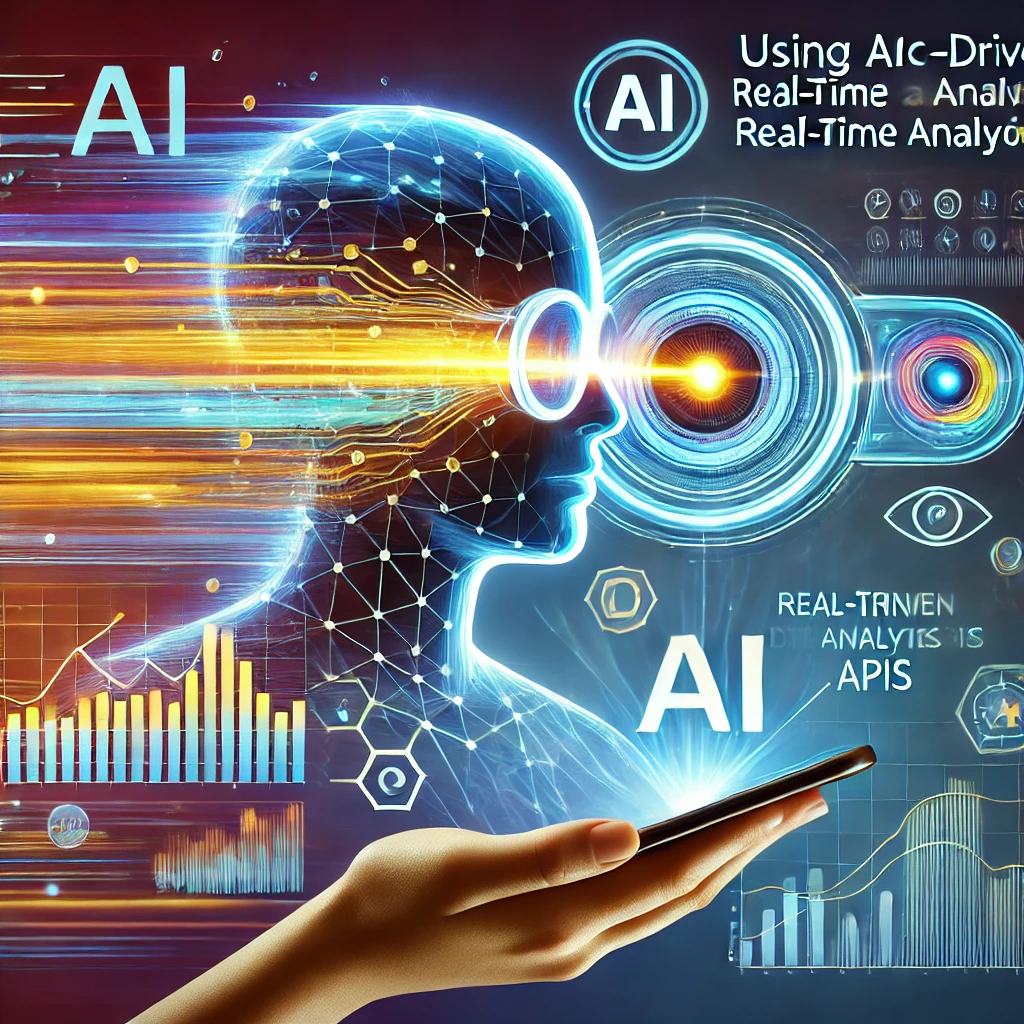Using Syncloop for AI-Driven Real-Time Data Analytics APIs

Syncloop provides a robust platform for building and managing AI-driven real-time data analytics APIs, enabling developers to integrate machine learning models and analytics capabilities into scalable, high-performing APIs. This blog explores how Syncloop supports the development of these APIs and outlines best practices for their implementation.
The Role of APIs in AI-Driven Real-Time Data Analytics
APIs are integral to real-time analytics workflows, enabling:
- Data Collection: APIs gather data from various sources, such as IoT devices, social media, or transaction systems.
- Model Integration: APIs interface with machine learning models to generate insights.
- Real-Time Decision-Making: APIs enable instantaneous predictions or classifications, driving automated actions.
- Visualization and Reporting: APIs deliver analytics outputs to dashboards and reporting tools.
- Workflow Automation: APIs streamline data pipelines, reducing manual intervention.
Challenges in AI-Driven Real-Time Analytics APIs
- Low Latency Requirements Real-time analytics demands APIs with minimal response times.
- High Data Volume Managing large data streams from multiple sources can strain APIs.
- Complex Model Integration Deploying and integrating AI models into APIs can be resource-intensive.
- Scalability APIs must scale to handle fluctuating data loads and user demands.
- Security and Compliance Protecting sensitive data and adhering to regulatory requirements is critical.
How Syncloop Supports AI-Driven Real-Time Analytics APIs
Syncloop offers tools and features that simplify the development and management of AI-driven analytics APIs:
- Model Integration Syncloop supports the integration of machine learning models from frameworks like TensorFlow, PyTorch, and Scikit-learn.
- Dynamic Data Mapping Transform incoming data to match the format and requirements of AI models.
- Real-Time Processing Enable low-latency data processing for instantaneous insights.
- Workflow Automation Design workflows to automate data ingestion, transformation, and analysis.
- Scalable Infrastructure Syncloop’s cloud-native architecture ensures APIs can handle increasing data volumes and user requests.
- Monitoring and Analytics Track API performance, error rates, and response times to ensure reliability.
- Advanced Security Protect APIs with encryption, authentication mechanisms, and role-based access control.
Steps to Build AI-Driven Real-Time Analytics APIs with Syncloop
Step 1: Define Use Cases
Identify the analytics goals and use cases. Examples include:
- Predicting equipment failures using IoT sensor data.
- Recommending products in real time based on user behavior.
- Monitoring social media sentiment for brand mentions.
Step 2: Integrate Data Sources
Use Syncloop to connect APIs to various data sources. Configure endpoints for:
- Streaming data from IoT devices or transaction systems.
- Accessing stored data in cloud databases or data lakes.
- Fetching third-party data via external APIs.
Step 3: Deploy AI Models
Integrate AI models into APIs using Syncloop. Define endpoints to:
- Pass data to models for predictions.
- Retrieve and format model outputs for downstream use.
Step 4: Optimize for Real-Time Processing
Enable real-time processing by:
- Configuring APIs for asynchronous communication.
- Minimizing latency in data transformation and transmission.
Step 5: Automate Workflows
Design workflows to automate analytics processes. For example:
- Ingest raw data from a sensor network.
- Transform and normalize the data.
- Pass the data to an AI model for analysis.
- Deliver predictions to a dashboard or trigger an action.
Step 6: Monitor and Scale
Use Syncloop’s monitoring tools to track API performance. Implement scaling policies to:
- Handle peak traffic efficiently.
- Ensure consistent performance under varying loads.
Best Practices for AI-Driven Analytics APIs
- Optimize Data Pipelines Streamline data ingestion and transformation to minimize processing times.
- Adopt Asynchronous Communication Use asynchronous workflows to handle large volumes of data and improve responsiveness.
- Implement Caching Cache frequently accessed data or model outputs to reduce computational overhead.
- Ensure Data Security Protect sensitive data with encryption and authentication mechanisms.
- Leverage Real-Time Monitoring Continuously track performance metrics to identify and resolve bottlenecks.
Example Use Case: Real-Time Fraud Detection
A financial institution implements real-time fraud detection using Syncloop APIs:
- Data Integration: APIs collect transaction data from payment gateways.
- Model Deployment: APIs interact with an AI model trained to detect fraudulent patterns.
- Real-Time Analysis: APIs analyze transactions and flag suspicious ones in milliseconds.
- Workflow Automation: Automate alerts to fraud teams and block flagged transactions.
- Monitoring: Use Syncloop to track latency and ensure compliance with industry standards.
Benefits of Using Syncloop for AI-Driven Analytics APIs
- Rapid Development: Simplify API creation and deployment with intuitive tools.
- Real-Time Insights: Enable instantaneous analytics with low-latency APIs.
- Scalability: Handle growing data volumes and user demands seamlessly.
- Enhanced Security: Protect data and ensure compliance with regulatory requirements.
- Improved Reliability: Gain actionable insights into API performance and uptime.
The Future of Real-Time Data Analytics
As businesses increasingly rely on data-driven decision-making, AI-powered real-time analytics will become a cornerstone of modern applications. Syncloop equips developers with the tools needed to build scalable and secure APIs, enabling organizations to unlock the full potential of their data.
Image Description
A conceptual graphic illustrating AI-driven real-time analytics APIs powered by Syncloop, showcasing data integration, machine learning models, and real-time insights displayed on interactive dashboards. The image highlights seamless API workflows and performance monitoring.
Back to Blogs